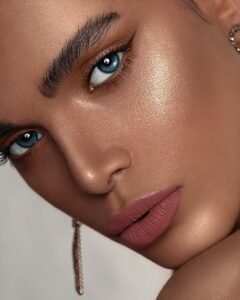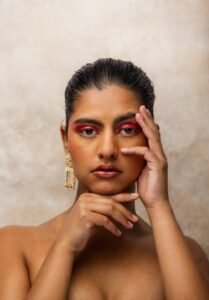The Science of Facial Beauty
Facial beauty has been a subject of fascination for centuries, and researchers have long sought to understand the elements that contribute to attractiveness. In recent years, advancements in technology and scientific research have shed light on the science behind facial beauty. This article explores various aspects of facial beauty, including facial symmetry, proportions, the role of specific features, skin health, facial expressions, ageless beauty, cultural perceptions, evolutionary perspectives, gender differences, and the influence of personality. By unraveling these elements, we can gain a deeper understanding of what makes a face beautiful and appreciate the diversity of beauty across cultures.

Facial Symmetry: The Key to Attractiveness
One of the key factors in facial beauty is symmetry. Numerous studies have shown that individuals with more symmetrical faces tend to be perceived as more attractive. Facial symmetry is thought to be an indicator of genetic health and developmental stability. It is believed that symmetrical faces are easier to process and are considered more aesthetically pleasing. Researchers have found that even slight deviations from perfect symmetry can lead to a decrease in perceived attractiveness.

The Role of Proportions in Facial Beauty
Facial proportions also play a significant role in determining attractiveness. The distance between facial features, such as the eyes, nose, and mouth, should be in proportion to create a balanced and harmonious face. The concept of “golden ratios” is often used to define these ideal proportions. For example, the distance between the eyes should be approximately 46% of the face’s width. The more closely an individual’s facial proportions conform to these ideal ratios, the more attractive they are perceived to be.

The Golden Ratio: A Timeless Beauty Standard
The golden ratio, also known as the divine proportion, has been used since ancient times to define beauty. It is a mathematical ratio of 1:1.618 that appears repeatedly in nature and is believed to be universally appealing. In terms of facial beauty, the golden ratio can be observed in the ideal proportions between the forehead, eyes, nose, and lips. While not everyone’s face will perfectly conform to this ratio, it serves as a guideline for understanding what is considered aesthetically pleasing.

Facial Features: Eyes, Nose, and Lips
Certain facial features are often considered more attractive than others. The eyes, for instance, are often regarded as the most important feature in determining facial beauty. Large, symmetrical eyes with long lashes are typically seen as more attractive. Similarly, a well-defined and proportionate nose is considered desirable. The lips also play a crucial role in facial beauty, with full and symmetrical lips often perceived as attractive. These features, when in harmony with the overall facial structure, contribute to a beautiful face.

Skin Health and Complexion: The Glow Factor
Aside from facial structure, healthy skin and a radiant complexion greatly enhance facial beauty. Clear, smooth skin free from blemishes, wrinkles, or discoloration is often associated with youth and vitality. Factors such as hydration, nutrition, skincare routine, and protection from the sun can significantly impact the skin’s health and appearance. A glowing complexion and a natural radiance can enhance the attractiveness of a face.

The Impact of Facial Expressions on Beauty
Facial expressions also play a crucial role in facial beauty. A warm and genuine smile is universally appealing and can make a face more attractive. Research has shown that positive facial expressions, such as happiness and friendliness, are more likely to be rated as attractive. These expressions can convey positive emotions and make the individual appear more approachable and likable. On the other hand, negative or neutral expressions can detract from the overall attractiveness of a face.

The Science Behind Ageless Beauty
Ageless beauty is a fascinating aspect of facial attractiveness. Studies have found that certain traits associated with youthfulness, such as smooth skin, full lips, and symmetrical features, are consistently rated as attractive across different cultures. This preference might be rooted in evolutionary psychology, as these traits are often associated with reproductive health and fertility. Additionally, the maintenance of healthy skin through skincare routines and lifestyle choices can contribute to a more youthful appearance.

Cultural Perceptions of Facial Beauty
Facial beauty is not solely determined by universal standards. Cultural influences greatly shape our perceptions of what is considered attractive. For example, in some cultures, fair skin may be viewed as more desirable, while in others, a tan complexion is preferred. The ideal facial features, proportions, and even expressions can vary significantly across different cultures. Understanding cultural perceptions of beauty helps us appreciate the diversity and uniqueness of facial aesthetics worldwide.

Evolutionary Perspectives on Facial Attractiveness
Evolutionary psychologists propose that certain facial features are considered attractive due to their association with evolutionary fitness. For instance, facial symmetry and proportionate features may indicate good health and genetic fitness, making individuals more desirable as potential mates. Some studies suggest that preferences for specific features, such as high cheekbones or a strong jawline, may be linked to indicators of dominance and reproductive success. These evolutionary perspectives provide insights into the biological underpinnings of facial attractiveness.

Gender Differences in Facial Beauty Perception
Research has shown that there are differences in how men and women perceive facial beauty. Men tend to prioritize features associated with youthfulness and fertility, such as smooth skin and full lips. Women, on the other hand, may place more emphasis on masculinity in men’s faces, including a strong jawline and pronounced facial bone structure. These gender differences in facial beauty perception reflect the unique evolutionary and social factors that influence mate selection preferences.

The Influence of Personality on Facial Beauty Perception
It is intriguing to consider how personality traits can influence the perception of facial beauty. Studies have found that individuals with more positive personality traits, such as kindness and warmth, are often rated as more attractive. Additionally, people tend to find faces more attractive when they share similar personality traits. This suggests that our perception of facial beauty is not solely based on physical features but also influenced by the perceived personality traits associated with a person’s face.
The science of facial beauty is a complex and multifaceted field, encompassing various elements that contribute to attractiveness. From facial symmetry and proportions to features, skin health, expressions, and cultural influences, each aspect provides valuable insights into our understanding of beauty. While universal standards exist, individual preferences and cultural variations make facial beauty a diverse and fascinating subject. By unraveling the science behind facial beauty, we can appreciate the complex interplay of genetics, evolution, culture, and personal perception that shapes our ideals of attractiveness.
